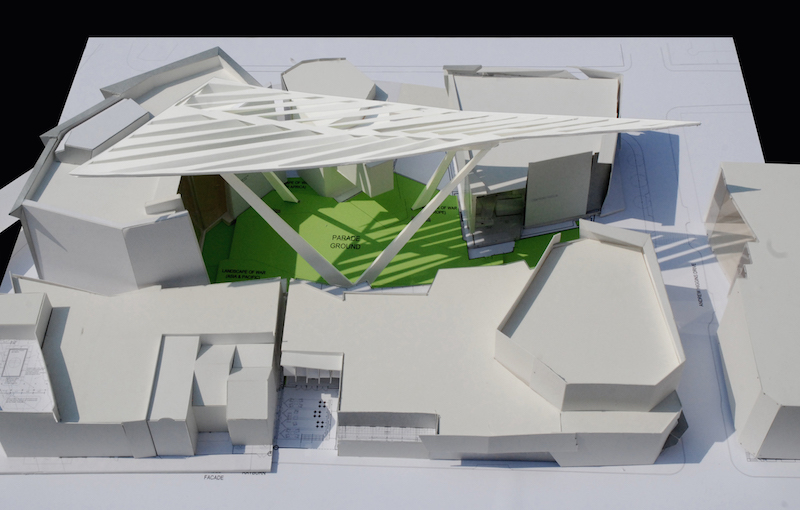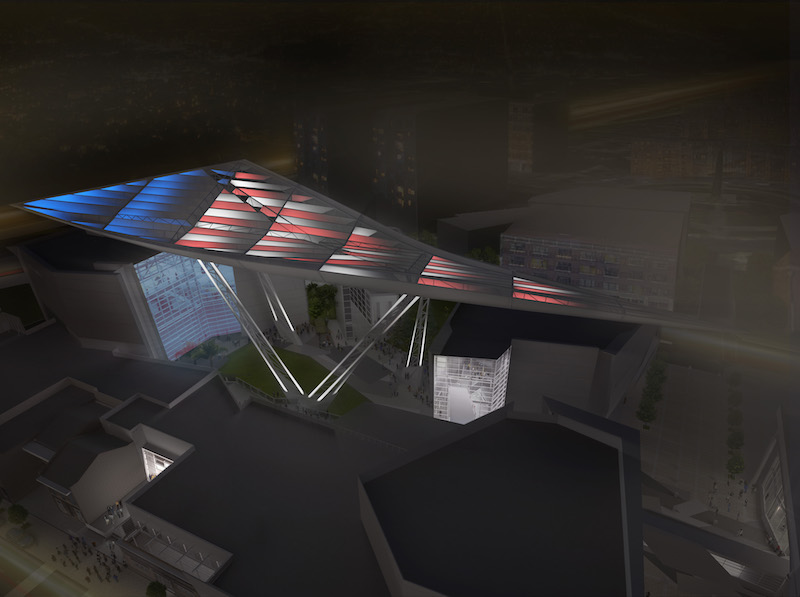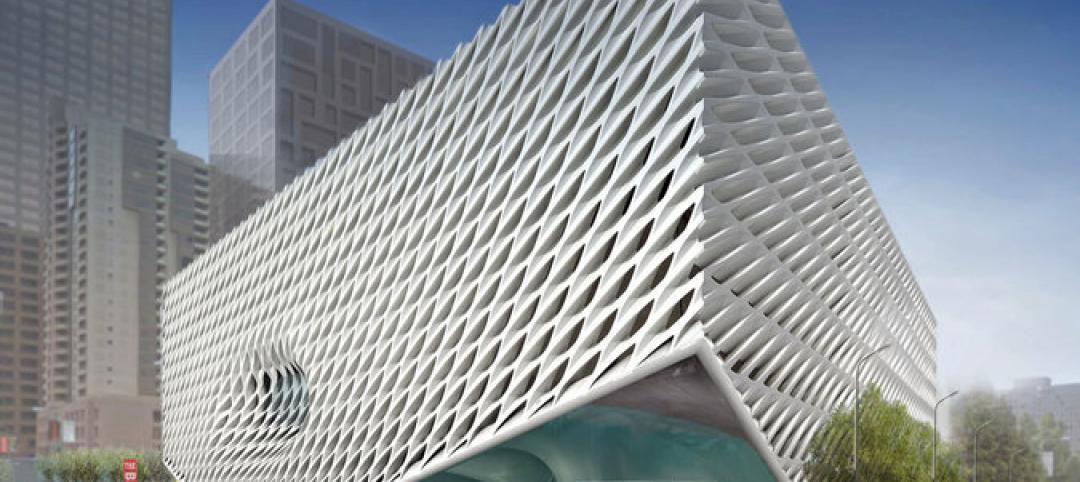The National WWII Museum in New Orleans broke ground on March 28 on a new structure that will tie together the six-acre campus both aesthetically and practically.
The Bollinger Canopy of Peace will rise 148 feet above the Museum’s campus and consist of a steel lattice framework that supports Teflon-coated fiberglass membrane panels. Four steel legs will be anchored in more than 1,260 cubic yards of concrete.
 Courtesy of The National WWII Museum.
Courtesy of The National WWII Museum.
The 448-foot-long and 126-foot-wide piece will create a grand entryway to the Museum and will also provide shade for visitors on both the Founders Plaza and the Col. Battle Barksdale Parade Ground. Programmable lighting and messaging can be projected from below. At night, a lighting system designed by Solomon Group will cast various colors up its steel support legs and through the fiberglass sails.
The Canopy of Peace is meant as a symbolic representation of the hope and promise unleashed by the end of World War II hostilities and will alter the New Orleans skyline. Voorsanger Mathes is the architect for the project, which is slated for completion in Winter 2018.
 Courtesy of The National WWII Museum.
Courtesy of The National WWII Museum.
Related Stories
| Jun 18, 2014
Arup uses 3D printing to fabricate one-of-a-kind structural steel components
The firm's research shows that 3D printing has the potential to reduce costs, cut waste, and slash the carbon footprint of the construction sector.
| Jun 16, 2014
6 U.S. cities at the forefront of innovation districts
A new Brookings Institution study records the emergence of “competitive places that are also cool spaces.”
| Jun 13, 2014
First look: BIG's spiraling museum for watchmaker Audemars Piguet
The glass-and-steel pavilion's spiral structure acts as a storytelling device for the company's history.
| Jun 12, 2014
Tod Williams Billie Tsien Architects' design selected for new UCSC facility
The planned site is a natural landscape among redwood trees with views over Monterey Bay, a site that the architects have called “one of the most beautiful they have ever worked on.”
| Jun 12, 2014
Austrian university develops 'inflatable' concrete dome method
Constructing a concrete dome is a costly process, but this may change soon. A team from the Vienna University of Technology has developed a method that allows concrete domes to form with the use of air and steel cables instead of expensive, timber supporting structures.
| Jun 11, 2014
David Adjaye’s housing project in Sugar Hill nears completion
A new development in New York's historic Sugar Hill district nears completion, designed to be an icon for the neighborhood's rich history.
| Jun 9, 2014
Green Building Initiative launches Green Globes for Sustainable Interiors program
The new program focuses exclusively on the sustainable design and construction of interior spaces in nonresidential buildings and can be pursued by both building owners and individual lessees of commercial spaces.
| Jun 9, 2014
Eli Broad museum files $19.8 million lawsuit over delays
The museum, meant to hold Eli and Edythe Borad's collection of contemporary art, is suing the German company Seele for what the museum describes as delays in the creation of building blocks for its façade.
| Jun 4, 2014
Want to design a Guggenheim? Foundation launches open competition for proposed Helsinki museum
This is the first time the Guggenheim Foundation has sought a design through an open competition. Anonymous submissions for stage one of the competition are due September 10, 2014.
| May 29, 2014
7 cost-effective ways to make U.S. infrastructure more resilient
Moving critical elements to higher ground and designing for longer lifespans are just some of the ways cities and governments can make infrastructure more resilient to natural disasters and climate change, writes Richard Cavallaro, President of Skanska USA Civil.















